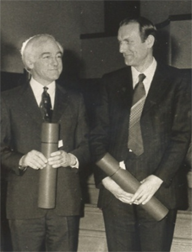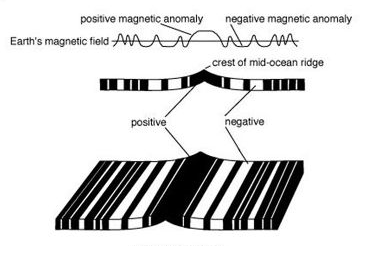Frederick Vine and Drummond Matthews

Left: Matthews (1931 - 1997)
Right: Vine (1939 - present)
These British geologists first worked together when Vine was a PhD student under Matthews at Cambridge Univeristy.
Their work looked at the patterns of magnetic stripes on the ocean floor. If Hess was right, they hypothesised, the symmetrical pattern of stripes was no accident, but indicated that the Earth’s magnetic field switches direction over time, from its current (normal) direction to the opposite (reversed) direction.
When material from the mantle rises up through mid ocean ridges and cools, it preserves a record of the polarity of the Earth’s magnetic field. This is because magnetite in the basalts is strongly magnetic, and aligns with the field when it cools.
Vine and Matthews noticed there was a symmetrical pattern of magnetic stripes on either side of the mid ocean ridges. In addition when the basalts of the sea floor were dated, they were found to be the same age at similar distances away from the ridge on each side. This suggested that the ocean floor was created at the mid ocean ridges, then was split in half by later activity and pushed sideways.

Magnetic stripes on the ocean floor
Image courtesy of the Naked Science Society
They published the idea in 1963 in a Nature paper called ‘Magnetic anomalies over oceanic ridges’. It became known as the Vine-Matthews-Morley hypothesis, recognising the work of Canadian geologist Lawrence Morley who had independently come up with the same idea. It became the first scientific test of sea floor spreading, and a crucial development in the theory of Plate Tectonics.
Next pioneer